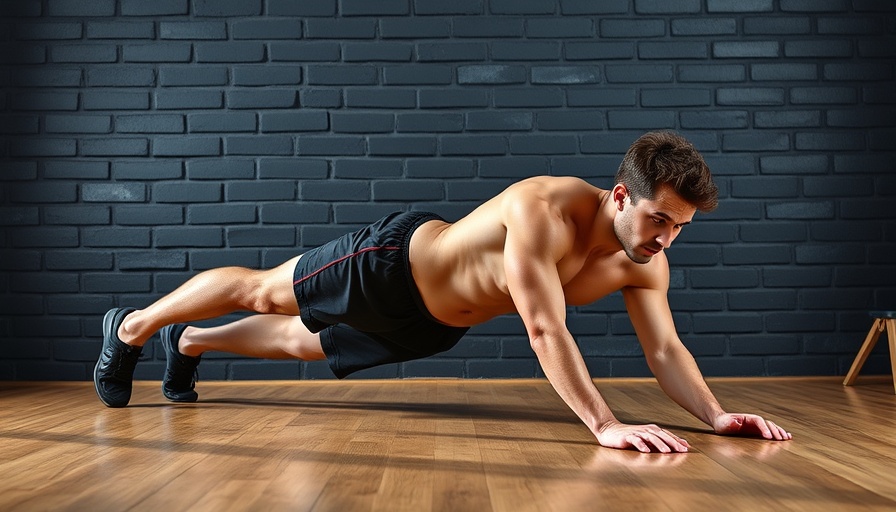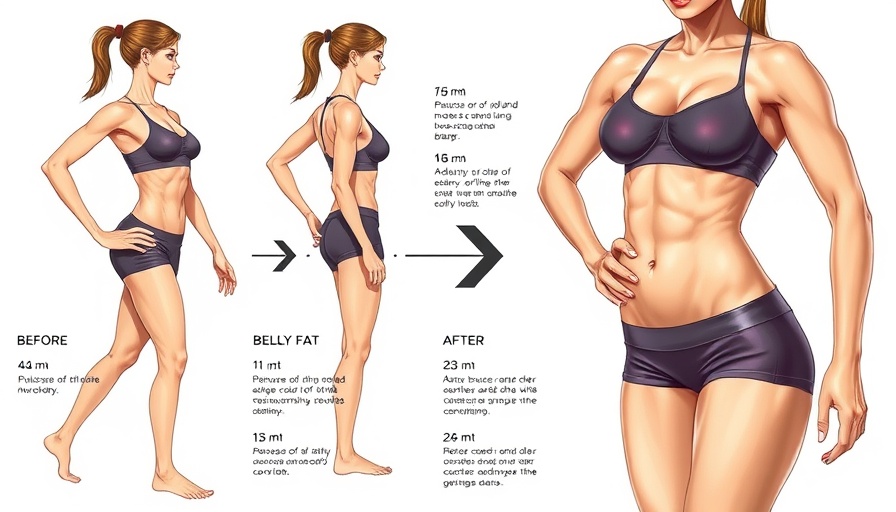
The Shift Away from Sit-Ups: A New Era of Core Training
In recent years, fitness enthusiasts and professionals alike have re-evaluated traditional exercises, particularly sit-ups, which have long been a staple in core training routines. The video titled 3 BEST Core Strength Exercises [NO SIT-UPS!] emphasizes the importance of focusing on effective core engagement without the risks associated with sit-ups. This innovative approach not only addresses common back issues but also encourages a more sustainable fitness practice aimed at long-term strength and stability.
In the video 3 BEST Core Strength Exercises [NO SIT-UPS!], the discussion dives into innovative alternatives to sit-ups, exploring key insights that sparked deeper analysis on our end.
Unveiling the Three Essential Core Exercises
As highlighted in the video, three core exercises stand out for their ability to build real strength while prioritizing safety. These are the reverse crunch, side plank, and hollow body hold. Each move has unique benefits that enhance core stability while mitigating the strain on the lumbar region, making them suitable for individuals of varying fitness levels.
Exercise One: The Reverse Crunch
The reverse crunch provides a safer alternative to the traditional sit-up, particularly for targeting the lower abs. By keeping your back flat against the floor and focusing on controlled movements, this exercise minimizes the risk of spinal compression. Merely lying on your back, lifting your legs at a 90-degree angle, and smoothly lowering your heels while ensuring your lower back maintains contact with the ground will engage your core effectively. Aim for two sets of 10 to 15 repetitions, emphasizing slow and stable movements.
Exercise Two: The Side Plank
The side plank targets the obliques, which are essential for lateral strength and overall core stability. Unlike sit-ups, which primarily engage the rectus abdominis (the "six-pack" muscle), the side plank addresses the entire midsection. To perform this exercise, prop up on your forearm and lift your hips to create a straight line from your head to your feet. Begin with two sets of holds, lasting 20 to 40 seconds each side. For those new to the side plank, modifying with a bent knee can foster strength as you work toward the full version.
Exercise Three: The Hollow Body Hold
This exercise is a game-changer for back health. By focusing on isometric core bracing without spinal flexion, the hollow body hold establishes a foundation of stabilizing strength. Lie flat on your back, lift both arms and legs slightly while keeping your lower back firmly pressed against the floor. Aim for holds of 20 to 40 seconds, adjusting the difficulty by changing the height of your limbs. Prioritize maintaining your spine’s contact with the ground throughout the exercise to mitigate potential strain.
The Importance of Core Training for Injury Prevention
Incorporating these exercises into daily routines can contribute significantly to injury prevention. As the video conveys, traditional sit-ups can lead to back problems due to the excessive spinal flexion involved. By adopting a smarter and safer approach, fitness trainers can foster an environment where clients develop robust cores, enhancing their overall performance and functionality.
Future Trends in Core Strength Training
As the fitness industry evolves, understanding the importance of core training without risking injury is paramount. Gym owners and trainers might reconsider their approach to foundational exercises, focusing on holistic strength-building techniques that respect the body's biomechanics. This shift not only encourages safer practices but can also enhance client retention by developing functional, pain-free movement patterns.
In conclusion, engaging in core exercises such as the reverse crunch, side plank, and hollow body hold is vital for fostering a strong, resilient body. Fitness professionals are encouraged to pivot from outdated methods like sit-ups toward methods that promote stability and comprehensive strength. For trainers looking to expand their repertoires and offer innovative solutions, incorporating these exercises could lead to improved client satisfaction and better long-term outcomes.
With such innovative approaches to fitness, it's essential for gym owners and trainers to stay ahead of the curve. This means not only adopting new techniques but also continually educating themselves and their clients on effective practices that can lead to better health outcomes.
 Add Row
Add Row  Add
Add 




Write A Comment